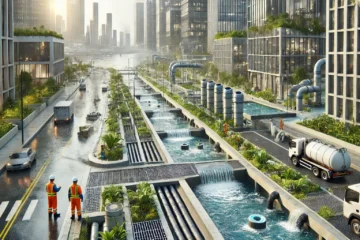Ships are intricate engineering marvels that require precise coordination of multiple systems to function efficiently and safely. Among these, MEP (Mechanical, Electrical, and Plumbing) works are pivotal in ensuring the operational effectiveness, safety, and comfort of a ship. This blog delves into the intricacies of MEP systems in ships, their components, challenges, and best practices.
1. Mechanical Systems
Mechanical systems in ships are responsible for propulsion, environmental control, and various auxiliary functions. Key components include:
Propulsion Systems
The propulsion system is the heart of a ship’s movement and includes:
- Main Engines: Diesel engines or gas turbines that drive the ship’s propellers.
- Propulsion Shafts and Propellers: Transfer engine power to create thrust.
- Gearboxes: Adjust engine output to optimal speeds for the propeller.
HVAC Systems
Heating, ventilation, and air conditioning (HVAC) systems ensure a comfortable environment onboard.
- Air Handling Units (AHUs): Circulate and regulate air within the ship.
- Chillers and Heat Exchangers: Maintain temperature control in cabins, storage rooms, and engine spaces.
Firefighting Systems
Ships are equipped with advanced firefighting systems to handle emergencies:
- CO₂ Systems: Suppress fires in enclosed spaces like engine rooms.
- Sprinkler Systems: Automatically release water during fire detection.
- Foam and Dry Chemical Systems: Used for oil or fuel fires.
Auxiliary Mechanical Systems
These include:
- Fuel oil, lubrication oil, and ballast systems.
- Sewage treatment plants.
- Bilge and sludge handling systems.
2. Electrical Systems
Electrical systems in ships are critical for power distribution, navigation, and communication. Key components include:
Power Generation
Ships generate electricity through:
- Diesel Generators: Primary source of onboard power.
- Emergency Generators: Provide backup power during outages.
- Shore Power Connections: Supply power while docked.
Power Distribution
Electricity is distributed to various parts of the ship using:
- Main Switchboards: Control and distribute power.
- Transformers: Adjust voltage levels as required.
- Busbars and Cables: Carry electrical current across the ship.
Lighting Systems
- Navigation and Signal Lights: Ensure visibility and compliance with maritime rules.
- Interior and Deck Lighting: Illuminate living and operational spaces.
Navigation and Communication
Advanced electronics facilitate safe operations:
- Radar and GPS: Provide real-time location and environmental data.
- Communication Systems: VHF radios and public address systems ensure effective communication.
- Automation Systems: SCADA and PLC systems monitor and control ship operations.
3. Plumbing Systems
Plumbing systems onboard manage water, waste, and other fluids. Major components include:
Freshwater Systems
- Desalination Units: Convert seawater into potable water using reverse osmosis or distillation.
- Storage Tanks and Pumps: Distribute freshwater across the ship.
Sanitary Systems
- Blackwater Systems: Collect and treat sewage.
- Greywater Systems: Manage wastewater from sinks, showers, and laundries.
Fuel and Oil Systems
- Bunkering Systems: Safely transfer fuel from shore to the ship.
- Purification Systems: Remove impurities from fuel and lubricants.
Ballast Systems
- Ballast Water Treatment Systems: Ensure compliance with international regulations by treating water before discharge.
Challenges in MEP Works for Ships
Corrosion
Saltwater exposure accelerates corrosion of metal components, requiring the use of advanced coatings and materials.
Space Constraints
Efficient design and installation of systems within the limited space available onboard is a significant challenge.
Regulatory Compliance
MEP systems must adhere to stringent international regulations, such as SOLAS (Safety of Life at Sea) and MARPOL (Marine Pollution).
Maintenance
Ships often operate in remote areas, making maintenance and part replacement more complex.
Best Practices in MEP Works
- Material Selection: Use corrosion-resistant materials like stainless steel or coated alloys.
- Energy Efficiency: Incorporate energy-efficient systems such as LED lighting and variable frequency drives.
- Automation: Deploy advanced monitoring systems to reduce manual intervention and improve safety.
- Regular Maintenance: Implement predictive and preventive maintenance schedules to minimize downtime.
- Compliance: Ensure adherence to international standards and classification society guidelines (ABS, DNV, etc.).
Conclusion
MEP works in ships are the backbone of maritime operations, ensuring seamless functionality and compliance with safety standards. By leveraging advanced technologies and adhering to best practices, the maritime industry continues to innovate and meet the challenges of modern shipping.


